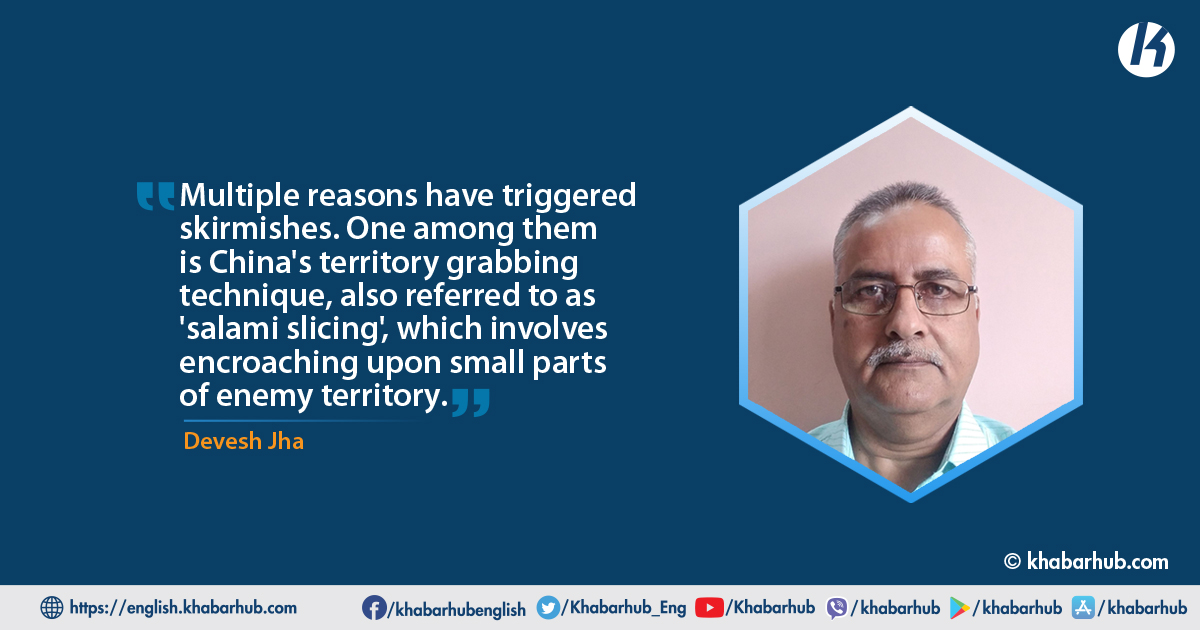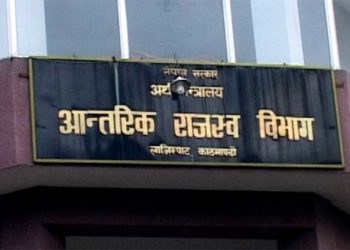After a gap of 30 years, a three-day surprise visit to the Chinese-controlled Autonomous Region Tibet by President Xi Xinping was reported by state media after the visit.
President Xiyang Xemin was the last visitor to Tibet. However, Xi already visited Tibet 10 years ago as the Vice President.
Xi’s visit was more significant as he asked for the support of locals to the national security issues adopting the setup of mixed Tibetan and Han settlements in the border areas.
In addition to this, local Tibetan militia are being raised to assist border defense including special attention being paid to their ‘patriotic education’.
President Xi also visited Nyingchi, a major link in the proposed high-speed railway from Lhasa to Chengdu in Sichuan province which lies only 15 km from the Indo-China border.
The importance of rail link is well-known for the movement of warfare materials swiftly to the border in case of any armed conflict.
Nyingchi is close to the great bend of the Brahmaputra at which a gigantic hydropower project is planned. It could impact the flow of water (as a water bomb in the future) southwards to India and Bangladesh.
President Xinping’s recent visit to Tibet was the reflection of decisions taken at the Seventh National Forum on work in Tibet in August 2020 in which he spoke about ‘stability, development, ecology and border area consolidation’.
The new Taliban regime denies concerns with al-Qaeda, but their connections with other Jihadis are as usual in capturing power.
Xinping’s sensitive approach for border control was based on the view of the clashes between Indian and Chinese troops preceded by a tense standoff in Doklam located at the India-Bhutan-China trijunction in 2017.
In June 2017, a military standoff occurred between China and India as China attempted to extend a road on the Doklam plateau southwards near the Doka La pass and Indian troops moved in to prevent the Chinese to no avail.
India acted on behalf of Bhutan as per the Indo-Bhutanese Friendship Treaty of 1949. Bhutan formally objected to China’s road construction in the disputed area.
The strategic significance of Doklam is due to Tibet’s Chumbi Valley pointing towards India’s Siliguri Corridor, a narrow 24 kilometer-wide stretch between Nepal and Bangladesh that connects the rest of India with the northeastern states including key strategic significance to Bhutan, containing the main supply routes into the country.
The Chinese military is believed to be in a weak position in the Chumbi Valley because the Indian and Bhutanese forces control the heights surrounding the valley.
The desire for heights is thought to bring China to the Doklam Plateau so that it gives a commanding view of the Chumbi Valley itself and overlooks the strategic Siliguri Corridor to the south. It also outflanks the Indian defenses in Sikkim which are currently oriented northeast towards the Dongkya range.
Similarly beginning on May 5, 2020, Chinese and Indian troops engaged in aggressive melee, face-offs, and skirmishes at locations along the Sino-Indian border, including near the disputed Pangong Lake in Ladakh as Chinese forces objected to Indian road construction in the Galwan river valley.
Later on 15/16 June 2020, melee fighting resulted in the deaths of 20 Indians and casualties of 43 Chinese soldiers.
The Chinese refused the casualties of their soldiers previously but accepted it later. However, numbers are still a matter of debate.
Soldiers taken captive by both sides were released after a meeting of higher authorities and diplomatic talks.
Partial disengagement from Galwan, Hot Springs and Gogra occurred in June–July 2020 while complete disengagement from Pangong Lake north and the south bank took place in February 2021.
Multiple reasons have been cited as the trigger for these skirmishes. One is China’s territory grabbing technique, also referred to as ‘salami slicing’, which involves encroaching upon small parts of enemy territory over a large period of time.
Indian governments have neglected the border areas for decades and turned a “blind eye” to Chinese land grabbing in the region even though the Ladakh and Arunachal Pradesh leaders acknowledged the presence of regular Chinese patrols inside the north-east India as well.
Some claimed the skirmishes were a show of strength for China amidst the COVID-19 pandemic, which had damaged its international reputation.
In any perspective, it’s solidarity with Pakistan as both of them are feeling unrest due to the abrogation of article 370 by Modi’s government in August 2019 which changed the status of Jammu and Kashmir.
For some, the Chinese may be irked by the parliamentary speech of Home minister Amit Shah who declared Aksai Chin, a disputed region administered by China, was part of the Indian-administered Ladakh Union Territory.
It also linked to India’s growing alliance with the United States as Indo-Pacific strategy and the Quadrilateral Security Dialogue (QUAD) which is a strategic dialogue between the United States, Japan, Australia, and India.
Initiated in 2007 by the dialogue was paralleled by joint military exercises of an unprecedented scale, titled Exercise Malabar.
The diplomatic and military arrangement was widely viewed as a response to increased Chinese economic and military power which was responded by issuing formal diplomatic protests to its members from the Chinese side.
Nowadays, the South East Asian countries are witnessing an uprising of Taliban after 20 years as Afghanistan’s cities fall in rapid succession, as the United States completes a hasty withdrawal from the country.
The Chinese government has regularly accused the ETIM of planning and undertaking terrorist attacks in Xinjiang, accusations it has used to justify its widespread crackdown in the region.
The new Taliban regime denies concerns with al-Qaeda, but their connections with other Jihadis are as usual in capturing power.
The majority of the international community is responding negatively. The US, India, Germany and NATO alliance have already announced their reservation for the legitimacy of the Taliban.
However, it would be not a big deal as several experiences related to military rulers got legitimize later. Chinese seems supportive whereas Russians are still maintaining silence.
China’s Foreign Minister Wang Yi met with senior leaders of the Taliban lead by co-founder and political department chief Mullah Abdul Ghani Baradar.
Describing as a decisive force Wang expected from Taliban to play an important role in the country’s “peace, reconciliation and reconstruction process”.
Moving cautiously, Wang also mentioned the East Turkestan Islamic Movement (ETIM) which he called an “international terrorist organization,” and said the Taliban should “completely sever all ties” with the group to promote regional stability.
The Chinese government has regularly accused the ETIM of planning and undertaking terrorist attacks in Xinjiang, accusations it has used to justify its widespread crackdown in the region.
Beijing has invested heavily in Central Asia in recent years through its BRI and Foreign Ministry has previously discussed the possibility of extending the China-Pakistan Economic Corridor (CPEC) into Afghanistan.
China seems to forward new alliances with fundamentalist Islamic nations. Muslim countries like Turkey, Iran, Pakistan and Malaysia have been already with it.
Now as Afghanistan is also controlled by fundamentalist Taliban, the structure will proceed. Chinese strategy with Islamic fundamentalists is surprising as in its own country they are blamed for the brutality with Uyghur Muslims.
Several countries have accused China of committing genocide in Xinjiang. Human rights groups believe China has detained more than one million Uyghurs against their will over the past few years in a large network of state-claimed “re-education camps”, and sentenced hundreds of thousands to prison terms.
The Chinese strategy may be to build a joint effort of fundamentalist Islamic moves as well as border tactics. South Asia may witness communal disharmony and tension on the Sino-Indian border.
China has also been accused of forced labor, women forcibly sterilized, tortures, and sexually abused including targeting Muslim religious figures and banning religious practices in the region, as well as destroying mosques and tombs.
However, China denies all allegations of human rights abuses in Xinjiang, claiming its system of “re-education” camps is there to combat separatism and Islamist militancy in the region. Even Pakistani Prime Minister Imran Khan also denied such types of information about Muslims.
Meanwhile, some planned propaganda and malafied activities are in practice intentionally.
Last month there was a blast in a bus at Khaibar Pakhtunwa province of Pakistan that claimed the death of 13 persons including 9 Chinese engineers.
Pakistani authorities denied any terrorist attack at that time. However, foreign minister Shah Mahmud Quraishy has accused India and Afghanistan for this incident.
Suddenly a Hindu temple was demolished in Pakistan by Muslim fundamentalists and the same happened in Bangladesh too. Obviously, these are side effects of Muslim fundamentalist uprising protected from China.
Experienced from Doklam and Galwan Valley skirmishes, President Xinping’s vision seems more clear. The decision made in Seventh National Forum on Work in Tibet in August 2020 about border areas consolidation would be the plan of action.
The Chinese strategy may be to build a joint effort of fundamentalist Islamic moves as well as border tactics. South Asia may witness communal disharmony and tension on the Sino-Indian border.
Unsatisfied by abrogation of article 370, QUAD, Indo-Pacific strategy, there are chances of fresh confrontation in the northern region which could ultimately raise the temperature in the Himalayas.









Comment